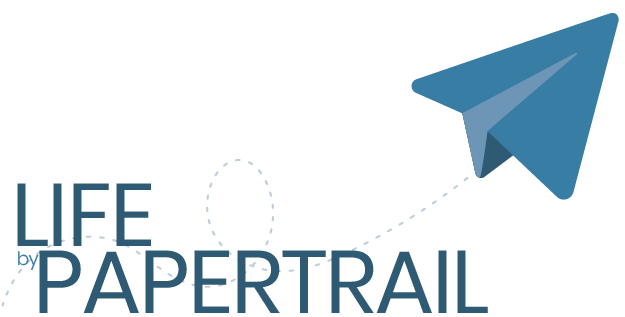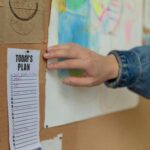Budgeting: what is it, and why does it matter?
Did you know that 65% of Americans don’t know how much they spent last month? I was one of them until my credit card statement delivered a shocking wake-up call three years ago. That $4,300 balance didn’t appear overnight—it was the result of hundreds of small, untracked expenses that added up faster than I realized. Budgeting changed everything for me.
The word “budget” often triggers feelings of restriction and deprivation. But what if I told you a budget isn’t about limiting your freedom, but actually creating it? In 2025, with inflation affecting everything from groceries to housing, learning how to get started with budgeting isn’t just helpful—it’s essential. Whether you’re living paycheck to paycheck, trying to tackle debt, or simply wanting to make smarter money moves, a budget is your financial foundation. And the good news? Getting started is simpler than you might think!
Understanding What a Budget Actually Is (And What It Isn’t)
A budget is simply a plan for your money. Think of it as a roadmap that helps you reach your financial destinations, whether that’s paying off debt, saving for a vacation, or building an emergency fund. At its core, budgeting is about awareness and intention—knowing where your money comes from and deciding where it goes before you spend it.
What a budget isn’t: a punishment, a restriction, or a complex financial document that requires an accounting degree. The most effective budgets are actually quite simple. They create clarity around your finances and empower you to make conscious choices rather than wondering where your money disappeared to at the end of each month.
Many people avoid budgeting because they associate it with deprivation. However, a well-designed budget actually gives you permission to spend on things you value while cutting expenses that don’t matter to you. It’s about aligning your spending with your priorities. For instance, you might choose to eat out less frequently to fund a savings account for your dream vacation. That’s not restriction—it’s strategic allocation based on what matters most to you.
Understanding this mindset shift is crucial before diving into the mechanics of budgeting. When you view your budget as a tool for achieving what you want rather than a constraint holding you back, you’re already halfway to budgeting success.
Choosing the Right Budgeting Method for Your Personality
There’s no one-size-fits-all approach to budgeting. The best method is the one you’ll actually stick with, which depends largely on your personality, financial situation, and goals.
The Zero-Based Budget (popularized by Dave Ramsey) requires assigning every dollar a job until your income minus expenses equals zero. This comprehensive approach works well for detail-oriented people who want maximum control over their finances. It’s particularly effective for those paying off debt or saving for major goals, as it ensures no money falls through the cracks.
The 50/30/20 Method offers more flexibility. It allocates 50% of your income to needs (housing, food, transportation), 30% to wants (dining out, entertainment, hobbies), and 20% to savings and debt repayment. This simplified approach is perfect for beginners or those who find detailed tracking overwhelming.
The Envelope System works by allocating cash into physical or digital envelopes for different spending categories. When an envelope is empty, you stop spending in that category until the next budgeting period. This tangible approach can be particularly effective for visual learners and those who struggle with overspending. Research shows that people spend 12-18% less when using cash instead of cards, making this an effective method for getting spending under control.
Other popular methods include Pay Yourself First (prioritizing savings before budgeting the rest), the Anti-Budget (simply automating savings and paying bills, then spending the rest freely), and the Values-Based Budget (aligning spending with personal values). Consider trying different methods to find what resonates with you or creating a hybrid approach that addresses your specific needs.
Leveraging Technology: Tools and Apps That Make Budgeting Easier
Technology has transformed budgeting from a tedious chore into a streamlined process. The right tools can automate much of the work while providing valuable insights into your financial patterns.
Comprehensive budgeting apps like YNAB (You Need A Budget), Mint, and EveryDollar connect to your financial accounts and automatically categorize transactions.
For spreadsheet enthusiasts, Google Sheets and Microsoft Excel offer the flexibility to create customized budgeting systems. Many free templates are available online that you can adapt to your needs. This approach requires more manual input but provides complete control over your budgeting system.
Banking-specific tools have also evolved significantly. Many banks now offer built-in categorization of expenses, spending analysis, and even predictive features that warn you about potential overdrafts or unusual spending patterns. Simple automatic transfers between checking and savings accounts can be powerful budgeting tools when used strategically.
The most effective approach often combines multiple tools. You might use a budgeting app for day-to-day tracking, spreadsheets for longer-term planning, and banking features for automating savings. The key is finding a system that provides clarity without creating so much complexity that you abandon it.
When selecting tools, consider factors like cost (many excellent options are free), connectivity with your accounts and special features that align with your goals. Security is also paramount—only use reputable services with strong encryption and privacy policies.
Starting a budget is one of the most powerful steps you can take toward financial confidence and freedom. It’s not about restricting your life—it’s about creating awareness, alignment, and intentionality with your money. By understanding what budgeting truly means, gathering accurate financial information, choosing a method that matches your personality, setting up a realistic plan, leveraging helpful tools, avoiding common pitfalls, and developing supportive habits, you’re setting yourself up for financial success in 2025 and beyond.






